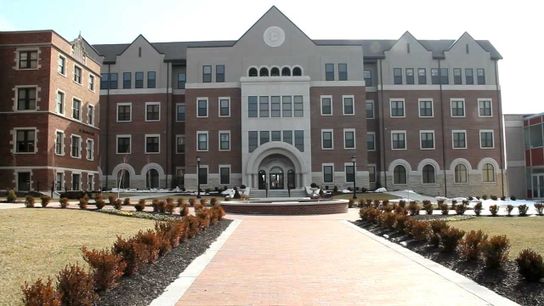On Tuesday, Cal State chancellor Timothy White took a big ol' thumbtack to the balloon when he announced the system's 23 schools -- five of whom play Division I football -- will, with "limited exceptions", conduct its fall 2020 term online.
When the California Collegiate Athletic Association, a Division II conference comprised almost entirely of Cal State schools, announced it would not compete at all during the fall semester, many feared other conferences would quickly follow suit.
The reaction, though, obscures a larger point: a university conducting the bulk of its education online doesn't necessarily mean its campus will be shut down. There is a large gulf between "completely open" and "totally closed" and an entire ocean of possibilities between those two extremes.
In fact, Inside Higher Ed roadmapped 15 different scenarios in which our nation's colleges and universities could operate. At the top is Back to Normal -- "In this scenario, the fall semester looks like any other fall semester." This feels highly unlikely. At the bottom is Fully Remote -- "Students would be taught in a virtual environment from wherever they happen to be." This, while admittedly less so than Back to Normal, also feels unlikely.
One model explored the possibility of lectures taking place in-person and online simultaneously. Another suggested bringing students back to campus while having them continue to learn virtually. Within those scenarios, students could return to campus and patronize the campus libraries, dining halls and other campus essentials, all while going to class on their laptop.
Purdue president Mitchell Daniels outlined how his school could re-open this fall with a myriad of adjustments while still welcoming students back to campus.
On that note, the reaction to Tuesdays announcement omitted a crucial details why Cal State's schools will remain largely online, a reason that may not necessarily apply to other schools. As the great Jon Wilner of the San Jose Mercury-News pointed out that Cal State's decision was influenced by the fact that, as a system comprised largely of commuter schools, many of its students live at home already, and it could switch to an online-only model with minimal disruption. The math will of course vary from one school, one system to the next.
White's announcement made room for this:
This combination, really a myriad of factors, will result in variability across the 23 campuses due to specific context and circumstances, but predominately there will be limited in-person experiential learning and research occurring on campuses for the fall 2020 term. On some campuses and in some academic disciplines course offerings are likely to be exclusively virtual.
The point is this: a kaleidoscope of possibilities are on the table, but few of them involve a totally shut campus where students are told to return to their hometowns. And anything short of that, it seems, would be deemed an acceptable environment to hold a college football season.
Of course, none of this guarantees that a college football season happens on time, or at all, but a swath of "online only" announcements doesn't mean the season is canceled, either. The truth will probably lie, as it so often does, in the fine print.
